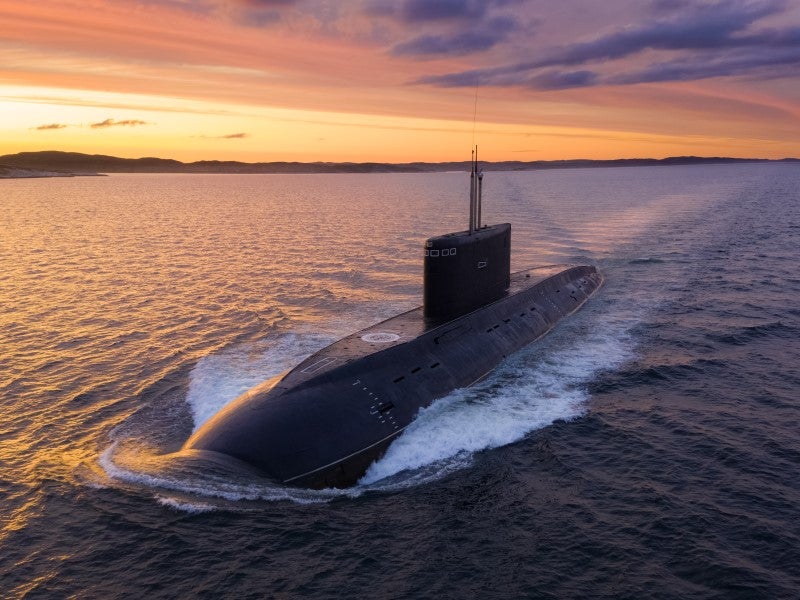The trilateral security pact between the UK, US and Australia beginning September 2021 is arguably the most significant development in British defence policy since the Cold War. Brexit will continue to influence profound changes in Britain’s place in the world, yet AUKUS’s nature as a trans-continental military alliance could come to define Britain’s military posture and the future of Indo-Pacific security as tensions with the PRC continue to rise. Whilst the deal covers joint work in electronic warfare, artificial intelligence (AI), hypersonic weapons and quantum technologies, its centrepiece is Australia’s acquisition of nuclear-powered attack submarines (SSNs).
Compared to diesel-electric boats, SSNs are much better suited to operating in large, deep, and wide oceans – ideal for the Indo-Pacific region, and a large deterrent for any hostile Naval force. The only limit on SSN endurance is how much food can be carried for the crew, whereas conventionally powered boats must surface after just a few days to collect oxygen for fuel combustion. Their larger designs make them ideal for rougher sea conditions, and the upgrade means Australia will significantly increase its power projection.
Building these vessels is one of the most complex, expensive and time-consuming projects a shipyard and navy can undertake. Only the US, UK, France, China, Russia and India have the capability to do so – but plans are now in place for a next-generation design, dubbed ‘SSN-AUKUS’, to be constructed in both the UK and Australia for their respective navies. As a stopgap measure, the US will sell three Virginia-class submarines with options for two more. The decision to share nuclear technology is a contentious one, but the UK’s sub-building expertise has served its strategic interests well, allowing forward deployment of British submarines to Australia at the naval base in Perth. Increasing production capacity in allied states is a wise move given the punishing schedule ahead for both the UK and US’s SSN yards: Barrow-in-Furness has begun work on three of the four Dreadnought-class ballistic missile submarines, and work is still ongoing on the final two Astute attack boats – Agamemnon and Agincourt. This pushes the likely date for SSN-AUKUS to begin work into the mid-2030s with a service entry of the late 2030s or early 2040s.
Likewise, the US will have to find time for the interim Virginia boats at a time when General Dynamics and Huntington Ingalls are reporting issues in simultaneously maintaining the current fleet and building the minimum of two new subs annually. The US is investing around $4.6bn over fiscal years 2023-2028 in both maintenance and construction capacity, as is the UK with a further £2bn that hopes to increase jobs across the supply chain. Australia too is supporting its ally with a ‘proportional financial investment’ to accelerate Virginia construction. Even AUKUS’s combined resources cannot hope to match China’s shipbuilding pace, but it seems the long-term threat to force parity has been minimised and political will is building to reappraise the value of a larger navy. The UK has now floated the prospect of increasing the size of the attack submarine fleet beyond its current seven – a major resource commitment, but the economies of scale involved in submarine building are significant.
The lead times for building SSNs are substantial, but notably, the head of the Australian Navy’s Nuclear Submarine Task Force remarked that the new SSN-AUKUS design is already roughly ‘70% mature’. It will incorporate technology and systems from all three countries, but construction will take place in the UK and, now, Australia’s Osborne yard in Adelaide. This comes with an initial investment of A$6bn over four years for an ambitious programme expected to employ up to 10,000 workers in the shipyard at the peak of building activity. This is not a simple project: establishing the ability to build nuclear submarines will require a multi-generational approach to skill retention and engineering practice, but should it pay off, it may mean a bigger role for the Australian defence industry in the Indo-Pacific region. Where a country sources their weapons from also often denotes geopolitical alignment, and so it is likely the weapons programmes produced by future AUKUS work will play a role for states concerned with deterring China.
It must be noted that AUKUS is likely to grow in scope and scale in the coming years, or that other pacts with the aim of deterring and balancing against China will emerge. Despite the snubbing of their contract for conventionally powered submarines from Naval Group by Australia, France’s Emmanuel Macron still expressed a desire to deepen strategic cooperation. Japan too has openly discussed joining AUKUS and is already well positioned for defence cooperation given its involvement in the sixth-generation Tempest fighter programme. Developing competitive systems and platforms will become more resource intensive as their complexity increases, and building interoperability with partner nations into the design also helps to simplify supply chains. As great power competition intensifies, defence technology cooperation as a means of diplomacy will play a major role in international relations. In that regard, the UK’s submarine-building knowledge base has conferred upon it a notable strategic advantage, perhaps marking the first real return of defence interests ‘East of Suez’ since the Cold War.





